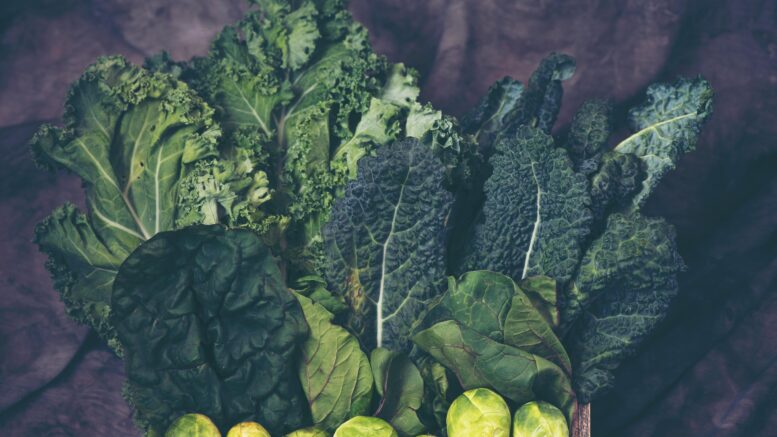Choosing the Right Kale Variety for Your Garden
When it comes to growing kale, selecting the right variety is crucial for a successful harvest. There are several types of kale, each with its unique characteristics and flavors. Curly kale, with its ruffled leaves and robust taste, is a popular choice for salads and smoothies. Dinosaur kale, also known as Lacinato or Tuscan kale, has dark, bumpy leaves and a slightly sweeter flavor, making it ideal for cooking. Red Russian kale, with its tender leaves and mild taste, is perfect for raw dishes and garnishes.
Consider your climate and growing conditions when choosing a kale variety. Some types, like Siberian kale, are more cold-tolerant and can withstand frost, making them suitable for cooler climates. In contrast, other varieties may thrive better in warmer regions. Additionally, think about the space available in your garden. Dwarf varieties are excellent for small gardens or container planting, while larger types may require more room to spread out.
It’s also important to consider your personal taste preferences and how you plan to use the kale. If you enjoy making kale chips, opt for a variety with thicker leaves that will hold up well during baking. For those who prefer raw kale in salads, a tender-leaf variety might be more appealing. By taking these factors into account, you can select the best kale variety to suit your needs and ensure a bountiful harvest.
Preparing Your Soil for Optimal Kale Growth
Preparing your soil is a critical step in ensuring healthy kale growth. Kale thrives in well-drained, fertile soil with a pH between 6.0 and 7.5. Start by testing your soil’s pH level using a soil test kit, which can be purchased at most garden centers. If your soil is too acidic, consider adding lime to raise the pH. Conversely, if it’s too alkaline, sulfur can help lower the pH to the desired range.
Once the pH is adjusted, focus on enriching the soil with organic matter. Incorporate well-rotted compost or aged manure into the top 6 to 8 inches of soil to improve its fertility and structure. This organic matter will provide essential nutrients and enhance the soil’s ability to retain moisture, which is vital for kale’s growth. Additionally, consider adding a balanced, slow-release fertilizer to supply a steady stream of nutrients throughout the growing season.
Proper soil preparation also involves ensuring good drainage to prevent waterlogging, which can lead to root rot. If your garden soil is heavy clay, consider amending it with sand or perlite to improve drainage. Raised beds are another excellent option for growing kale, as they allow for better control over soil quality and drainage. By taking the time to prepare your soil properly, you’ll create an ideal environment for your kale plants to thrive.
Planting Kale: Seeds vs. Seedlings
When it comes to planting kale, you have the option of starting from seeds or using seedlings. Each method has its advantages and considerations. Starting from seeds is cost-effective and allows you to choose from a wider variety of kale types. Sow seeds directly into the garden about 1/4 to 1/2 inch deep, spacing them 12 to 18 inches apart. Keep the soil consistently moist until germination, which typically occurs within 5 to 10 days.
On the other hand, using seedlings can give you a head start on the growing season, especially in regions with shorter growing periods. Transplant seedlings into the garden after the last frost date, ensuring they are spaced adequately to allow for growth. Seedlings are also less susceptible to pests and diseases compared to young seedlings, making them a more resilient choice for beginners.
Regardless of the method you choose, timing is crucial. Kale is a cool-season crop that grows best in temperatures between 60°F and 70°F. Plant seeds or seedlings in early spring or late summer for a fall harvest. If you live in a region with mild winters, you can also plant kale in the fall for a winter harvest. By understanding the pros and cons of seeds versus seedlings, you can make an informed decision that suits your gardening style and climate.
Watering and Fertilizing Kale Effectively
Proper watering is essential for healthy kale growth. Kale requires consistent moisture, especially during dry spells, to prevent the leaves from becoming tough and bitter. Aim to provide about 1 to 1.5 inches of water per week, either through rainfall or supplemental irrigation. Water deeply and infrequently to encourage deep root growth, which will help the plants withstand periods of drought.
Mulching around your kale plants can help retain soil moisture and reduce the need for frequent watering. Apply a 2 to 3-inch layer of organic mulch, such as straw or shredded leaves, around the base of the plants. This not only conserves moisture but also suppresses weeds and regulates soil temperature, creating a more stable environment for your kale.
In addition to watering, fertilizing is crucial for promoting vigorous growth and high yields. Kale is a heavy feeder and benefits from regular feeding throughout the growing season. Apply a balanced, nitrogen-rich fertilizer every 4 to 6 weeks to support leaf development. Alternatively, you can use a liquid seaweed or fish emulsion fertilizer for a more organic approach. By maintaining a consistent watering and fertilizing schedule, you’ll ensure your kale plants remain healthy and productive.


Be the first to comment on "Growing Kale: A Step-by-Step Guide for Beginners"